Working on my new 18th century shift reminds me that even the simplest of garments can be fascinating. From the Renaissance smock, through the 18th century shift, to the 19th century chemise, white linen (and, later, cotton) was cut into squares, rectangles, and triangles and then assembled into incredibly similar shapes. Even the full Renaissance Venetian camicia is built on the same principle as the comparatively spare 18th century shift, using all the available fabric to piece together a jigsaw of pattern pieces. According to Costume Close-Up, 18th century shifts almost always required from 3 1/4 to 3 1/2 yards of fabric, with size variation accomodated by purchasing narrower or wider linen. It wasn’t until the third quarter of the 19th century, when the chemise and drawers were streamlined into a one-piece garment called combinations, that any significant change occurred. That’s pretty impressive: at least 400 years (if not longer? medieval costume historians let me know!) of continuity.
6 thoughts on “Smocks, Shifts, & Chemises, oh my”
Leave a Reply
You must be logged in to post a comment.

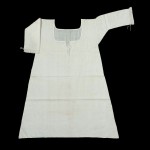
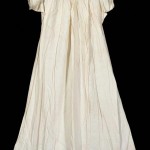
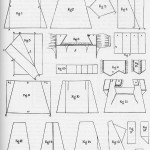
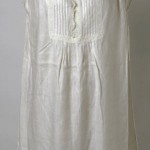
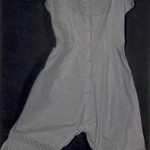
Clothing in the early medieval period was contructed much the same way with retangular shapes and using the entire width of fabric. Very Efficient!
I love how simple shifts / chemises / these underthings are! Heck, I wear the same one for multiple periods 16th-19th centuries, bec. they all function the same (besides, for multi-day events, you just need more undies ;-). And while I have yet to make anything earlier than 16th-c, from what I’ve seen of other ppl’s, it sure looks the same as later era’s shifts.
Trystan – ditto, altho I do have different shifts for different eras b/c sometimes you need the sleeves to be different (how many times can I use the word different?). I’ve been experimenting with a less bulky Venetian Ren. camicia, and basically used an 18th c. body shape with the usual big sleeves, and I’m loving it. And I wear my 18th c. shift under TONS of things (need to make more of those!).
Hehe, I feel the same about the word “different”… 🙂
I’m not an experienced costumer AT ALL – I mostly admire what other people have made on the internet – but I know that the early medieval tunic, which was pretty much the same for men and women, was constructed exactly like this. Rectangles and triangular gores.
It’s longer, the basic “T-Tunic” is built on almost identical lines to the renaissance woman’s shift, I’d give it 800 years of the same basic shape being slightly altered to fit current fashion.
Fabrics
It would appear that the most common fabric used for the chemise or smock are linens of varying qualities according to the social position of the wearer and the finances available. According to Francoise Piponnier and Perrine Mane in their book, Dress In The Middle Ages, peasants and the less affluent would have worn hemp underclothes which were less expensive than linen. The detail at right from the 1330-40 painting Scenes From The Life Of St John The Baptist appears to show a fabric of reasonable weight and stiffness suggesting linen.
In several instances we hear of noblewomen who become nuns and renounce their silken underthings. According to one written reference, a noble lady took up a hair shirt to replace her underclothes of silk as part of her penitence. This suggests that ladies of high society may have enjoyed luxurious silken chemises.
Decoration
Generally, the chemise during the medieval period is depicted as plain and white. Later in the Renaissance, many had blackwork embroidered at the neckline and sleeves. It does appear, however, that the chemise during the medieval period may have been decorated at least sometimes.
In the 13th century, we read a poem by an unknown author who laments the Sumptuary Laws and the restrictions on her clothing and in particular, her chemise. She says that she can no longer wear her white chemise which is richly embroidered with silk in bright colours and gold and silver. She bemoans:
Alas, I dare not wear it!
indicating not only that in her time period at least, the chemise could be richly embroidered with silk and precious metal thread and also that the Sumptuary Laws which were often largely ignored, were partially effective at times. It also indicates that her chemise may have been seen and was not entirely concealed by her outer clothing. Shown at right is a detail from 1484 Master Of The Housebook’s The Uncourtly Lovers which shows a chemise decorated with gold and pearls.
In 1298 the Consol of Narbonne passed a law against laced outer dresses which allowed the pleated and embroidered under-chemise to show. This tells us that at that period, at least, the chemise could also be pleated and embroidered. For a law to passed, it stands to reason that it must be an occurance common enough for it to be a concern.